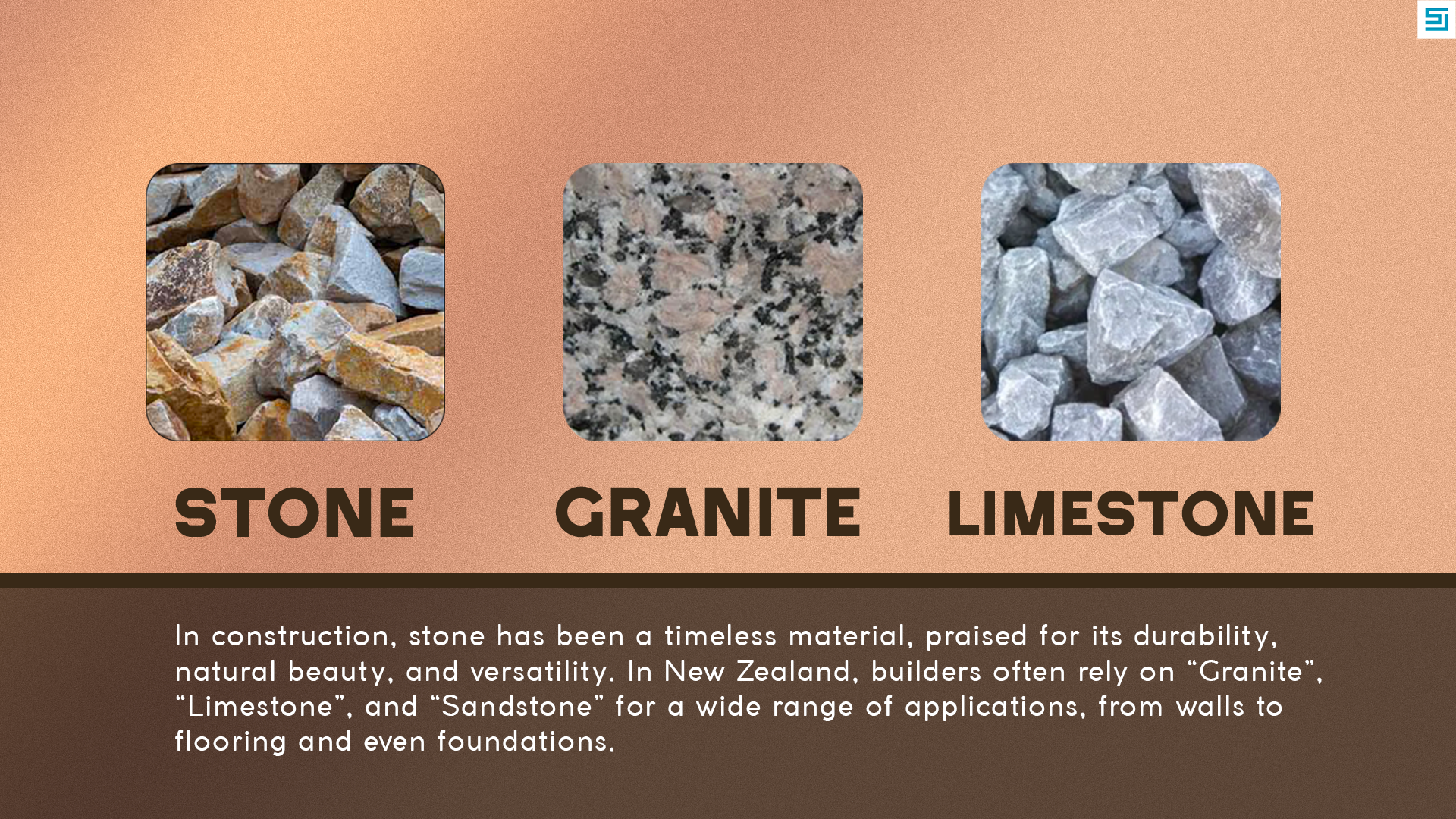In the world of construction, stone has always been a favored choice due to its strength, aesthetic appeal, and adaptability. In New Zealand, builders frequently utilize granite, limestone, and sandstone for various projects, including walls, flooring, and foundations. Each stone type offers distinct characteristics that suit different needs. This article will examine the features, advantages, and applications of these stones, as well as highlight the latest trends and popular insights in New Zealand’s construction industry.

Why Stone is a Preferred Construction Material in New Zealand
- Durability: Natural stones withstand harsh weather conditions, making them ideal for New Zealand’s variable climate.
- Aesthetic Appeal: The natural texture and color variations add character to modern and traditional designs.
- Eco-Friendliness: Stone is a sustainable material, often locally sourced, reducing carbon footprint.
- Versatility: Used in everything from flooring to structural foundations and decorative elements.
Granite: The Epitome of Strength and Elegance
Features of Granite
- Hardness: Among the hardest natural stones, making it resistant to wear and tear.
- Variety: Comes in a range of colors like white, black, grey, and red.
- Polishability: Can be polished to achieve a sleek, reflective finish or left unpolished for a rustic look.
Applications of Granite in Construction
- Walls and Facades: Perfect for external cladding due to its weather-resistant properties.
- Flooring: Common in high-traffic areas like commercial buildings and luxury homes.
- Kitchen Countertops: Popular for its resistance to scratches and stains.
- Foundations: Often used in monuments and long-lasting structures due to its incredible strength.
Benefits of Using Granite
- High resistance to abrasion and chemicals.
- Long lifespan with minimal maintenance.
Also Read: Top 10 Construction Estimating Software
Limestone: Versatile and Timeless
Features of Limestone
- Soft Texture: Easier to cut and shape, suitable for intricate designs.
- Natural Look: Its earthy tones blend seamlessly into natural landscapes.
- Thermal Stability: Offers excellent insulation properties, keeping interiors warm.
Applications of Limestone in Construction
- Foundation Blocks: Commonly used in historical and modern buildings.
- Walls: Both load-bearing and decorative walls benefit from limestone’s versatility.
- Flooring: Offers a smooth finish for interiors and patios.
- Driveways and Pathways: Durable yet visually appealing for outdoor spaces.
Benefits of Using Limestone
- Affordable compared to other stones.
- Easy to maintain and replace.
- Adds a classic and timeless charm to any structure.
Sandstone: Durable and Naturally Beautiful
Features of Sandstone
- Porous Nature: Allows water drainage, making it perfect for outdoor use.
- Warm Tones: Available in shades like beige, red, yellow, and brown.
- Non-Slip Surface: Ideal for flooring in wet areas.
Applications of Sandstone in Construction
- Walls: Used in both decorative and structural walls for a natural appearance.
- Flooring: A popular choice for pool decks and garden paths due to its non-slip surface.
- Paving and Landscaping: Great for outdoor areas like courtyards and walkways.
- Fireplaces and Mantels: Adds a rustic and cozy feel to interiors.
Benefits of Using Sandstone
- Provides a natural and earthy aesthetic.
- High weather resistance, perfect for New Zealand’s climate.
- Cost-effective compared to granite.
Stone Trends in New Zealand Construction
- Sustainability Focus: Builders increasingly use locally sourced stones to reduce environmental impact.
- Outdoor Living Spaces: Sandstone paving for patios and pathways is trending.
- Blended Aesthetics: Combining granite countertops with limestone or sandstone flooring for a unique interior design.
How to Choose the Right Stone for Your Project
- Purpose:
- Use granite for heavy-duty applications like countertops and foundations.
- Opt for limestone for intricate designs and affordable wall finishes.
- Choose sandstone for outdoor flooring and decorative elements.
- Budget:
- Limestone and sandstone are budget-friendly options.
- Granite is more expensive but offers unmatched durability.
- Location:
- For wet areas, sandstone’s non-slip properties are ideal.
- Granite is better for high-impact, heavy-use areas.
Cost Factors and Availability in New Zealand
- Granite: Imported varieties are more expensive; locally sourced granite is cost-effective.
- Limestone: Abundantly available in New Zealand, making it a popular and affordable choice.
- Sandstone: Often imported, but still competitively priced due to its durability and appeal.
Conclusion
Natural stones such as granite, limestone, and sandstone are essential in the construction industry. Their unique blend of durability, beauty, and adaptability allows them to be used in various applications, including foundations and flooring. In New Zealand, the growing emphasis on sustainability and visual attractiveness guarantees that these materials will remain key players in creating contemporary, long-lasting, and eye-catching buildings.
By understanding the features, applications, and benefits of each stone type, builders can make informed decisions to create projects that stand the test of time while meeting contemporary design standards.
